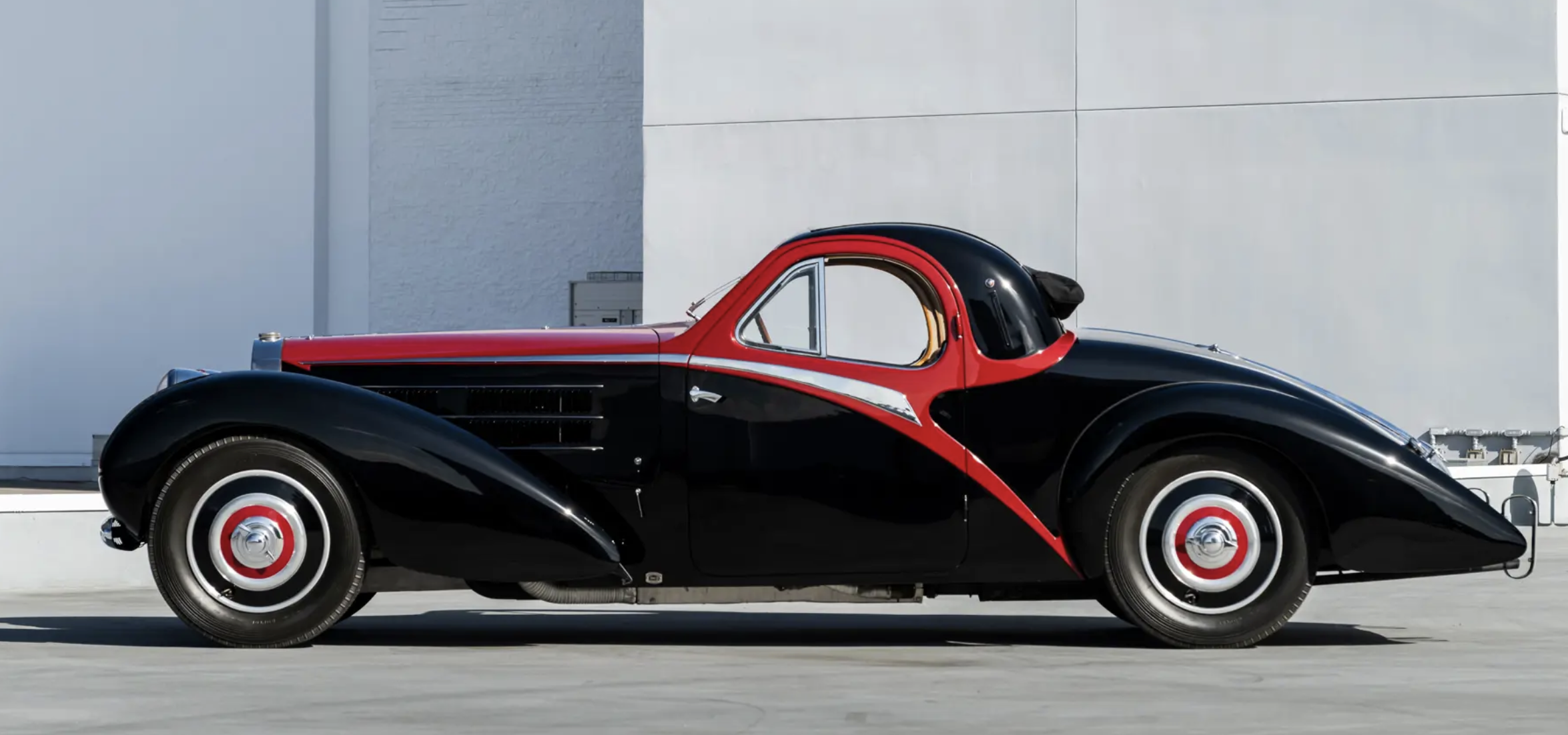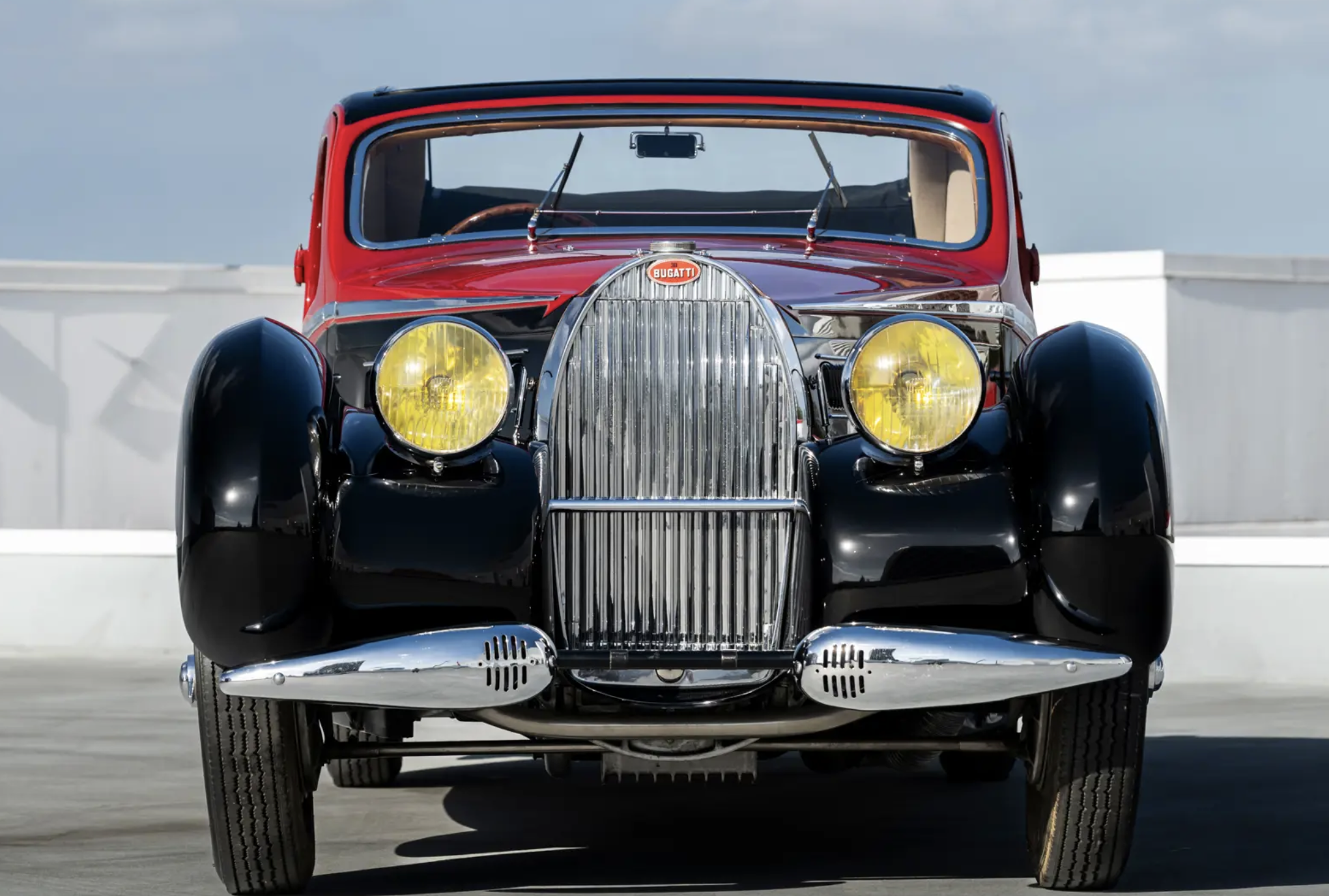1939 Bugatti Type 57C Atalante by Gangloff
Chassis No. 57828
Engine No.100C
Gearbox No. 100C
A masterpiece of late prewar design and engineering, this 1939 Bugatti Type 57C represents the final and most advanced evolution of Bugatti’s iconic grand touring platform. One of the last great cars built before the outbreak of World War II, chassis 57828 is not only a factory-supercharged model, it is a unique, one-off Gangloff-bodied Atlante “special” built to custom specifications for a favored client.
Delivered in August of 1939, this car was commissioned by Louis Dupont, a prominent Hotchkiss dealer and amateur racing driver based in Oran, Algeria. Though production of the Atlante body style had ceased by this time, Bugatti responded to Dupont’s request by subcontracting the body to Gangloff, who created a special coupe on drawing #4011 - one of just five or six Atalante specials, and the only example finished in this configuration.
What sets this car apart from all others is its elegant, fully retractable fabric roof, known as the “bureau top.” This rare configuration made the car not just an Atlante in spirit, but officially a coupé découvrable - combining the silhouette of a fixed-head coupe with the open-air drama of a convertible. The styling draws from the long-tailed Aravis form, with elongated fenders, a streamlined tailfin, and distinctive chromed arrows along the beltline. Its dramatic lines and rare open-roof treatment made it one of the most expensive Bugattis produced in 1939.
engine mounts, telescopic shocks, and a cross-braced chassis. Its 3.3-liter DOHC inline-eight (engine no. 100C) delivers over 160 horsepower, channeled through a four-speed gearbox (no. 100C), still present and original to the car.
Following delivery, the car remained in Algeria throughout World War II. In 1952 it was re-registered in Oran, and in 1955 was brought to Figoni in Boulogne-sur-Seine, where subtle refinements were made to the windshield and doors. Photographs from the time confirm the car’s current configuration—including its sweeping trim, tailfin, and signature “arrow” detailing.
Later owners included Georges Combe, who drove the car regularly in French rallies and hillclimbs, and Hervé Charbonneaux, whose family restored the car in the early 1980s to its original color scheme of black with red highlights. It was exhibited for years in the Charbonneaux museum before passing through the hands of Bugatti collectors Ton Meijer, Eric Albada Jelgersma, and finally the Petersen Automotive Museum, where it remained on display for over a decade.
Remarkably, the car still retains its original engine, supercharger, gearbox, front axle, instruments, and even its stamped sump, confirming its authenticity and historical continuity.
In 2025, this extraordinary Bugatti was acquired by Tom Maoli, joining his world-class collection of rare prewar automobiles. A one-of-one survivor that bridges the worlds of high-speed engineering and bespoke design, chassis 57828 is considered by Bugatti historian Pierre-Yves Laugier to have “one of the most beautiful profiles on the Type 57 chassis.”
Today, it stands as one of the most historically significant and visually breathtaking Bugattis in existence—an elegant reminder of what was possible at the height of European automotive artistry, just before the world would change forever.
History and Significance
Design Differences
Rare Gangloff-built body to drawing 4011 — 1 of 1 in this configuration
“Bureau top” full-length retractable roof, one of the most elegant fabric-top treatments on any prewar car
Long-tail Aravis-style rear profile with extended fenders
Distinctive chromed beltline arrows and sculpted tail fin
Finished in its original colors: black with red highlights
Exterior
Tan leather interior, restored in its original configuration with red exterior highlights
Refined cockpit layout with original instrumentation retained
Configured as a two-seat sports coupe with grand touring comfort
Dashboard, gauges, and switchgear preserved and presented in period-correct condition
Reflects a harmonious blend of prewar elegance and modern-day preservation
Interior
3.3-liter DOHC inline-8 with factory supercharger
Rated at 160+ horsepower
Engine No. 100C and Gearbox No. 100C — original and matching
4-speed manual gearbox, hydraulic brakes, rubber mounts, and upgraded suspension for modern driving ease
Performance focused yet refined — the pinnacle of prewar French engineering
Engine/Performance
Gallery





